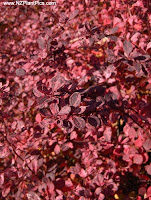 First, lets get revved up for these projects by looking at the two photos below:
First, lets get revved up for these projects by looking at the two photos below:They are before and after shots of the first of two major garden projects we completed this summer. Aside from looking pretty, updating a garden area has major benefits for a home owner:
2. You can uncrowd plants in over populated beds.
 3. If you do not like pruning (and who does?) you can replace plants that are too large and fast-growing with smaller and slower-growing species. However, although this means easier upkeep in the long run, this will require a little bit of research and thought on your part.
3. If you do not like pruning (and who does?) you can replace plants that are too large and fast-growing with smaller and slower-growing species. However, although this means easier upkeep in the long run, this will require a little bit of research and thought on your part.
4. If weeds are a problem, you can install weed-guard in your plant beds.
Here is some motivation for replacing the old planting bed:
What is not wrong with this picture? The planting bed is very over crowded, with too many plants in a small area. There are a lot of different types of plants, too many for my taste. Some of plants have become deformed from lack of care and damaged from the elements. Finally, there is a large buildup of dead leaves and other junk (garbage as well) mixed in with the mulch and it is not easy to remove because of the crowded plants.
Before you redo a garden area, there are some basics you should educate yourself about. You should research what your zone is (mine is zone 6), and what type of plants are best for your zone (they will be the easiest to have thrive in your yard, with minimal upkeep). You should match the plants you are picking to how much sunlight the area gets (full sun, part sun, or shade is very important). Finally, the plants final mature size should fit into the space (that way it will require minimal pruning). Of course, if you love a certain strange plant, that is not for your zone, and grows too big for the space.... you could still try to grow it, but you will need to put consistent effort in up keeping that plant... and it will easily die if you do not stay consistent. So, be smart, and find plants that are nice to look at, but also are easy to care for.
The first thing we did was remove the old plants. This required digging around each of the bushes, and getting underneath the bush's root ball. Once you get this up, you have successfully removed most of the roots. After that, break up the bush into pieces, and either put it in a mulch pile, or put it in the gardening brown bags you can pick up at Home Depot. Next, mix some fresh soil into the planting bed, before planting your new bushes.
Bye bye my bushes!
One bush after another!
Sorry little bush!
The second thing I did in planning my new beds was basic research:
- How do I balance winter color with spring color i.e. evergreens with spring flowering deciduous bushes?
- What color flowers, leaves and bark complement each other?
- Will the size of each plant fit in it's new location when fully grown?
- Will the plant grow well in the amount of light and zone I am in?
To solve these questions I decided on a few standards that I will follow for all my gardens around my house. I wanted a nice balance of red, green and yellow plants.
The red plants are the dwarf Japanese maple (will grow to a max of eight feet, perfect!), and barberry bushes (3' x3'). The maple will lose it's leaves in the winter, but maintains a beautiful bark color and shape.
The barberry will keep their leaves in winter unless it stays below zero for an extended period.
The yellow bushes are Euonymus (2' x 2'), aka winter creepers, they are a yellow variety and will keep their color all winter.
Euonymus Gold, Winter Creeper
The centerpiece bush is a green leafed Azalea that will bloom pinkish red flowers in the spring. It will lose leaves in the winter, but the bark has a nice look as well.
Azalea
All these plants will grow great in zone 6, require water once a week, and are great in full sun. Before purchasing the plants, measure your garden bed, and figure out how many plants will fit into the bed area. Do not over fill the garden! When you first purchase the plants, they are immature. They WILL grow, remember the main rule of gardening, things take time!
The plants we picked out
When planting a container bush, turn the container onto it's side and crush it. Turn the container and crush it a bit on each side till the dirt loosens and you can get the plant out. Next, while soil and dirt are getting everywhere, take the roots and try to separate them so they are not in such a tight ball. The roots grew like that to survive in the container, but it will harm the shrubs growth if you plant it like that. Place it in a hole twice the size of the roots, and fill in with dirt. Do not bury it too deep, the soil line should come up just above the root ball. Fill in around the plants with plenty of mulch and keep it well watered after planting. Do not feed the plant immediately after transplanting unless the instructions for the plant specifically say so. Some shrubs need time to adjust to the new soil and sun conditions. Plant feed forces it to want to grow quickly, which may end up causing harm if it has not finished adjusting.
Here is a link to more information about taking care of shrubs and trees. I agree with all the guidelines they have:
Finally, with all the work complete, you have a fresh new garden!













This was a relatively simple project. We knocked this out in no time. Only a few more of these to do and we'll be done with the outside!
ReplyDelete